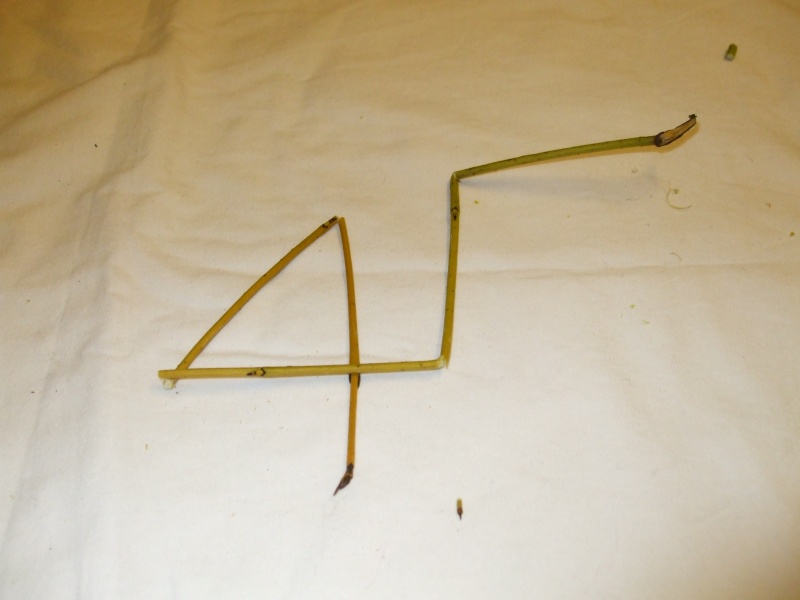
This is what I have been doing for the last few weeks, and it is all still relevant to do now!
Things I am either sowing, have just sown or am planning to sow very soon.
When soil and growing conditions are right, it is time to sow vegetables! A good indication that it is time, is to look at your lawn:- if the grass has started to grow the soil temperature will be above 5-6 degrees centigrade and you can sow/plant hardier seeds direct in the ground, or plant out tubers such as potatoes.
BUT If you have a heavy clay soil wait!. Seeds sown in wet or cold soil tend to rot and die. Waiting for a few more weeks won’t hurt, ( honest!)
A black or clear plastic covering over soil will warm it up, so you can sow some seeds outside a little earlier than usual. Spread plastic sheeting over the areas where you plan to sow the seeds. Weigh down the sides so it can't blow away in winter winds. After 3 - 4 weeks, the soil should be warm enough for seed sowing. I use big sheets of Geotextile ( weed sheet) which we have a huge roll of, so we have 4 sheets which cover the 4 plots in the veg garden all winter. We turn them back to let the weed seeds germinate in Jan, then cover the weeds up to kill them off ready for digging and planting in March :-)
I am sowing now outside in the ground
BUT in beds warmed up by geotextile cover and covered by fleece/cloche after, so you need to allow for my soil being quite warm and the seeds being protected after!
Broad beans (see separate post)
Parsnips (see separate post)
Radish
Turnip
Early carrots
Kohlrabi
Plant outdoors
Potatoes (see separate post)
Jerusalem Artichokes(see separate post)
Outside sometime soon, when I think its warm enough for them! plant on a waning moon
Shallots
Onion sets
I am currently sowing in trays and modules
Raising plants to transplant outdoors (or under cloches or in a greenhouse/ tunnel) gives you a head start on the season. It is simple to provide extra warmth for a few pots and trays of seeds - in a warm room, or on a heated bench for example. But remember - the seedlings that appear will also need some warmth and good light levels, until they can be moved to a frost free final position, so allow for where you are going to keep them. I have had a lot of success with a cold frame inside an unheated polytunnel and this would work just as well inside a conservatory or a plastic small greenhouse I think.
Inside in heated propagator ( see separate post)

Tomatoes/Peppers/Aubergines - for growing on in a cold greenhouse or tunnel
Herbs and salad leaves (all during the March waxing moon)
Outside in the Polytunnel
Potatoes in grow sacks ( see separate post)
I planted these in Feb on a waning moon. If you have a sheltered place you will get an earlier crop by doing this, up to 4 weeks earlier. Mmmmm new potatoes and butter...mmmmm
Brussels sprouts - for early crops
Early cabbage
B Beans in pots
Summer cabbage
Spring onions
Lettuce,(winter hardy varieties)
Leeks for transplanting ( I sow the autumn ones now, the winter ones in a months time)
Kohl Rabi - best sown in modules for transplanting
Celeriac - best sown in modules for transplanting
Sowing Leeks
Wait till early to mid-spring before sowing leek seed, depending on the weather. They can either be sown in a seed bed for transplanting the following summer, sown in trays/pots, or sown in their permanent positions. If you sow in a seed bed you have the added bother of transplanting, but this must be balanced out by the fact that if they are sown in their permanent position, they will take up a lot of space for a long time before producing results
I always sow seed in pots and then transplant.
A general note
Silly though this may sound, plant stuff you know you want to eat! Also, decide what you like and if space/time is limited, grow the stuff which is most expensive to buy. So, if you LOVE salad leaves and herbs, grow lots of them! If your favourite thing is new potatoes then grow lots of them!
It is much better to grow the veg you really really love, and eat lots of it, fresh and straight from your garden, than feel you "have" to grow beans, peas, onions or whatever....and then not want to eat it.
We grow lots of stuff, because we are trying to feed ourselves for most of the year!. Unless you have the time, space and inclination to do this, DON'T!
I used to grow new potatoes, salads, herbs and mange tout in our tiny garden in Worcester, ...and sprouts, leeks and carrots in winter because thay were the veg I loved to eat fresh from the garden
Also if you don't want to plant by the moon phase, or did but missed the correct phase, I wouldn't worry. I personally feel it gives a better yield BUT was planting stuff as and when for years and it didn't seem to matter too much ;-)
Look out for the posts mentioned above as they are wither already up on my blog, or will follow on soon.
Hope this helps!
 and composted it.
and composted it. 





















